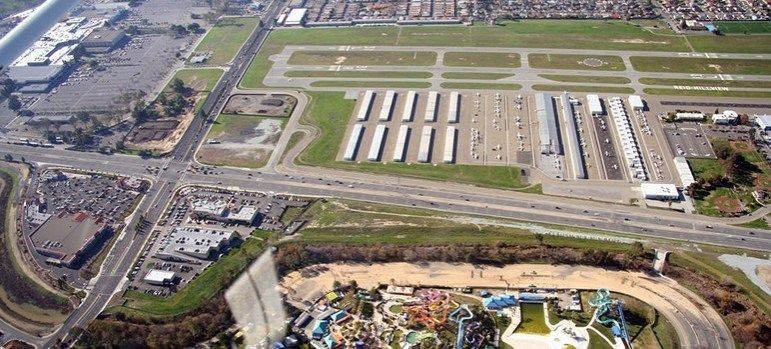Pakistan Aeronautical Complex JF-17
Pakistan Aeronautical Complex JF-17 user+1@localho… Wed, 11/10/2021 - 21:17 The JF-17 Thunder (also known as the FC-1 Xiaolong “Fierce Dragon”) is a single-engine, multirole, light fighter aircraft developed by Pakistan Aeronautical Complex...
The JF-17 Thunder (also known as the FC-1 Xiaolong “Fierce Dragon”) is a single-engine, multirole, light fighter aircraft developed by Pakistan Aeronautical Complex (PAC) and Chengdu Aircraft Corporation (CAC). It is powered by a single Klimov RD-93 afterburning turbofan engine supplying 18,298 lbf. (8,300 kgf) of afterburning thrust. As of the time of this writing, a total of 145 aircraft are in service with Myanmar, Nigeria and Pakistan. The light fighter is an increasingly attractive option for former MiG-21 and MiG-29 operators seeking low cost, non-Western hardware.
Program History
The JF-17 program began as a replacement for a wide array of legacy Pakistani tactical aircraft, including the Mirage III, Mirage 5, Nanchang A-5 and Chengdu J-7. Its origins lay in earlier efforts to develop a replacement for the MiG-21-derived J-7 in China. These efforts began in 1986 with a cooperation agreement between Grumman and CAC, which dubbed the proposed aircraft the Super-7, but the program stalled after the Tiananmen Square crackdown of 1989. CAC nonetheless continued low-level work on the program until it found a new partner in Pakistan in the 1990s. Under the agreement CAC reached with Pakistan, the two countries would each pay for half of the aircraft’s development costs. In 1995, it was reported that CAC was also cooperating with Mikoyan for design support on the new fighter.
Ace Chinese aircraft designer Yang Wei of Chengdu played a major role in the design of the JF-17, incorporating concepts from the earlier J-10 into the aircraft. In 2000 he was appointed chief of the JF-17’s design team, becoming the youngest such project manager in China. He also pioneered fly-by-wire (FBW) flight controls on Chinese tactical aircraft, and the JF-17 is among the first beneficiaries of this work.
The first prototype was rolled out in May 2003, and it first flew in China in September of that year. Five prototypes were built, one of which was a static test article and another of which was a fatigue test article. In November 2005, it emerged that testing of a prototype with modified inlet geometry and a revised fuselage configuration was underway. The alterations were designed to permit top speeds of up to Mach 1.8 compared to the Mach 1.6 of the base aircraft. A contract was signed that year for the aircraft’s engines, with 100 RD-93s to be supplied to China for $270 million USD ($368.19 million in 2020) with 400 more on option.
Complications over avionics and Russian obstinance in issuing approval for China to re-export RD-93 engines to Pakistan delayed early deliveries to the Pakistani Air Force (PAF). 8 were originally to be delivered in 2006, with another 8 to follow in 2007, but by early 2006 it was clear that the initial deliveries would be delayed to at least 2007. Russia finally cleared re-export of the RD-93 from China to Pakistan in April 2007 despite protests from India, eliminating the final hurdle to the JF-17’s first serial production deliveries. The JF-17 formally entered Pakistani Air Force service in February 2010, and it made its first public international appearance at Farnborough Air Show later that year.
Features
Overall Design
The JF-17 is a conventional multirole fighter design. From the outset, CAC and PAC set out to design an affordable fighter that nevertheless could wield the core capabilities of a modern fighter. It possesses modern avionics and mission systems, robust self-protection systems and can carry modern air-to-air missiles (AAMs). Progressive updates to the design will help Pakistan and other operators maintain its relevance well into the 21st century, particularly as the integration of air-to-ground precision munitions make the JF-17 a true multirole fighter.
To facilitate emergency aircrew egress, the JF-17 carries Martin-Baker Mk. 16 ejection seats with a canopy severance system. For life support, the aircraft carries a three-hour oxygen supply and comprehensive cockpit environmental controls.
Maneuverability and Flight Controls
The JF-17 is a tailed-delta design, with cropped wings, all-moving stabilators and a single vertical stabilizer. The delta wing design grants the JF-17 vortex lift for enhanced performance at high angles of attack but increases induced drag over a conventional swept or trapezoidal wing design. Leading-edge root extensions are mounted on the sides of the bifurcated engine intakes, further delaying stall at high angles of attack. These intakes are diverterless supersonic inlets (DSIs), which divert boundary-layer airflow away on their own, so the JF-17 does not feature splitter plates. DSIs also help minimize the frontal radar cross section (RCS) of the aircraft.
To increase lift and reduce stall speed, the JF-17 features leading-edge flaps. The aircraft also features twin ventral fins on the underside of the fuselage located immediately inboard of the stabilator. These fins help generate vortices for the stabilators, improving control at high angles of attack and increasing stall angle.
Partial (pitch only) quadruplex fly-by-wire (FBW) controls are employed to keep costs down while maintaining much of the safety, reliability and weight reduction benefits associated with FBW controls. In the roll and yaw axes, the aircraft features stability augmentation, and it is equipped with an automatic flight control system with altitude and attitude hold modes. The JF-17 also features a single-piece acrylic stretch canopy to maximize visibility.
Engines
The JF-17 carries a single Russian RD-93 turbofan engine, which is an uprated variant of the Klimov RD-33 capable of supplying a maximum 18,298 lbf (8,300 kgf) of afterburning thrust. The engine’s gearbox is located on the underside of casing instead of in the side-mounted arrangement used on the RD-33. A single-point pressure refueling system facilitates safe and reliable refueling. In a single-point system, fuel is pressurized and pushed into the aircraft from a single port, minimizing potential for spills inherent in traditional overwing fuel pouring systems.
A Chinese RD-33 derivative, the WS-13, eventually may be integrated on the JF-17 as it matures and undergoes testing on the FC-31 single-engine 5th-generation fighter. The WS-13 originally was developed for the JF-17 and was integrated on a Chinese FC-1 prototype aircraft, but thus far Pakistani production aircraft have been built with RD-93s due to reliability issues with the WS-13.
A higher thrust variant of the RD-93, the RD-93MA, has also been developed for the JF-17. It is rated for 19,842 lbf. (9,000 kgf) of afterburning thrust and entered ground testing in July 2020. Its higher thrust rating is enabled by modifications to its fan and hot section, and the integration of the BARK-93MA full-authority digital engine controller (FADEC). As of September 2020, the engine was slated to enter serial production in late 2021.
Avionics
The JF-17’s glass cockpit is built around three multifunctional displays (MFDs) and hands-on throttle and stick (HOTAS) controls. It also carries a head-up display (HUD) with an up-front control panel and a 25° field of view.
For self-protection, the JF-17 features an omnidirectional, vertical stabilizer-mounted radar warning receiver (RWR) and rear-aspect, tail-mounted missile approach warning system (MAWS) sensors. It is unclear if the MAWS sensors were present on original Block I aircraft, but they have been observed on Block II configuration aircraft. A lone identification friend-or-foe (IFF) blade antenna is fitted to the underside of the nose. The aircraft also has been observed in Pakistani service carrying what appears to be the Chinese KG-600 defensive electronic countermeasures (DECM) pod under the fuselage. Countermeasure flare dispensers are fitted underwing, just before the trailing edge.
The JF-17 Block I carries the KLJ-7 X-band mechanically scanned radar system, which can simultaneously manage 40 targets and track 10 in track-while-scan (TWS) mode. The KLJ-7 can handle engagements against two beyond-visual-range (BVR) air targets simultaneously.
Armament
The JF-17 is armed with an integral Gryazev-Shipunov GSh-23 twin-barreled, 23mm autocannon mounted on the underside of the port engine intake. It possesses seven hardpoints and can carry a wide variety of modern armaments. The centerline hardpoint and one hardpoint on each wing are plumbed for external fuel stores. For air-to-air engagements, the JF-17 can carry the SD-10A, the export variant of the Chinese PL-12 beyond-visual-range (BVR) air-to-air missile (AAM). With and active radar seeker, a datalink and inertial midcourse guidance, the PL-12 can prosecute a wide range of targets in complex combat situations and can engage targets up to 38-54 nm (70-100) km away. Integration tests for the missile were underway in Pakistan by 2010. Pakistan also procured 100 LD-10 antiradiation missiles from China that were delivered by the end of 2017. The LD-10 is a derivative of the SD-10A and can be deployed from the JF-17.
For short-range, air-to-air engagements, the JF-17 can carry the Chinese PL-5E, a short-range, infrared guided AAM based on the Russian AA-2 Atoll. In addition to maneuvering tolerances up to 40G, the PL-5E has an all-aspect engagement capability, with a maximum off-boresight angle of ±25° before launch and ±40° after launch.
For air-to-ground duties, the JF-17 can carry the LS-6 GPS/INS-guided bomb, which also can use GLONASS and BeiDou satellites for navigation. Other munitions the aircraft can carry include the LT-2 laser-guided bomb (LGB), the Paveway III-equivalent LT-3 LGB with a GPS/INS tail kit derived from the LS-6 or the GBU-12 Paveway II LGB. As of early 2017, the GB-1 500-lb. laser-guided bomb and YINGS III targeting pod were being qualified for use on the JF-17. At the time both the CM-400AKG stand-off air-to-surface cruise missile and CM-102 antiradiation missiles had been successfully integrated on the aircraft. The CM-400AKG is a lighter export variant of the YJ-12, with a range of 53-130 nm (98-241 km) and both 330.7-lbs. (150-kg) blast fragmentation and 441-lbs. (200-kg) penetrator warhead options. It has a GPS/INS navigation system and a multimode IR/TV/radar seeker for terminal guidance. The aircraft also is capable of carrying Mk. 80 series bombs, including bombs outfitted with Paveway II kits or other guidance kits (notably the Takbir Range Extension Kit).
In the anti-ship role, the JF-17 can carry the C-802AK sea-skimming anti-ship cruise missile (ASCM). The C-802AK is an export variant of the YJ-83, a high-subsonic ASCM with a range of 135 nmi (250 km), a 364-lbs. (165-kg) payload and an active radar seeker for terminal homing.
Finally, a JF-17 mockup was displayed at Zhuhai Airshow 2021 with models of two HD-1A air-launched cruise missiles. The HD-1A is a developmental system designed to achieve supersonic speeds via a ducted ramjet propulsion system. It is apparently a derivation of the HD-1, which was test fired in Northern China in October 2018. As depicted at the Zhuhai Airshow in 2018, the HD-1 had a strike range of 157 nm (290 km) and could achieve a speed of between 750 km/s and 1,200 km/s (1,458 kt to 2,332 kt, or approximately 2.2 to 3.5 Mach).
The HD-1A has a 14.76 in (375 mm) diameter and weighs 2,645 lb. (1,200 kg). It has a 530 lb. (240 kg) warhead. The new variant visibly differs from its predecessor with its two side-mounted intake ramps. The HD-1 had four mounted radially, and a different control surface arrangement.
Variants
Block II
The latter half of the Block II aircraft delivered to Pakistan (from serial 13-129 on) were plumbed to accommodate in-flight refueling probes. The Block II also includes upgrades to the JF-17’s oxygen system and new electronic countermeasures. Production of Block II aircraft commenced at PAC Kamra in December 2013.
Block III
The Block III JF-17 will carry an X band active electronically scanned array (AESA), which is almost certainly either the Nanjing Research Institute of Electronics Technology (NRIET) KLJ-7A or the LKF601E offered by AVIC LETRI. Reporting from early 2020 indicates that the KLJ-7A was selected over the LETRI offering.
The LKF 601E reportedly entered serial production in June 2018 and is air-cooled to limit space requirements. Nevertheless, the design appears to have matured since that time with the introduction of a mechanically steered mount to increase the radar’s field of regard. A partially obscured image of the array face indicates that the radar likely has around 1,000 – 1,100 transmit/receive modules. AVIC has claimed a detection range against a notional “fighter” target (probably with a 5 m2 RCS) of 92 nmi (170 km) compared to 43 nm (80 km) with a comparable mechanically scanned radar. The LKF601E display at Zhuhai Airshow 2021 indicated an “air-to-air range” in excess of 200 km against a fighter target. It also noted the radar could track 20 targets simultaneously and engage four and described its synthetic aperture radar (SAR) and sea-search modes.
The KLJ-7A is co-produced at PAC Kamra, and two variants exist. One of these features a single array on a mechanically steered mount, while the other features a fixed main array with two smaller side arrays to achieve a similar effect. Estimates of the KLJ-7A’s range mirror those for the LKF 601E, at 92 nm (170 km) against a 5 m2 RCS target.
The Block III design also features upgraded avionics, an integrated electronic warfare suite, an improved MAWS similar to that of China’s J-10C fighters, an improved wide-angle HUD and a helmet-mounted display (HMD). It also may feature an infrared search and track (IRST) system; while this has not been confirmed, an FC-1 test aircraft has been observed in China carrying an IRST pod mounted on a wing hardpoint.
Importantly, the Block III also will feature widened intakes. This will permit greater air flow and may be a step towards reengining the aircraft in the future, a possibility program officials have confirmed. The new intake is the only element of the Block III upgrade that cannot be retrofitted to existing JF-17 aircraft. On Dec. 27, 2019, photos of the first Block III prototype on its first flight test emerged. Assembly of serial production aircraft began on Dec. 30th, 2020.
One of the two known flying prototypes was in April 2021 seen carrying the PL-10E short-range AAM. The PL-10E is the export version of the PL-10, an infrared-guided missile featuring thrust vector control, pop-out control fins and strakes. It is designed with an HMD in mind and is suitable for high off-boresight engagements – it can slew its seeker up to 90-deg. off-boresight and is thought to be capable of hitting targets up to 10.8 nmi (20 km) away.
JF-17B
The JF-17B is a tandem-seat trainer variant of the JF-17 unveiled in June 2013. Unlike the base single-seater JF-17, the JF-17B features full three-axis fly-by-wire controls. The rear cockpit is fully missionized for combat training and operations. To compensate for the increased frontal profile, the vertical stabilizer is enlarged and swept back on the JF-17B, and the overall volume of the aircraft is increased to compensate for the second seat. The airframe also has been strengthened and composite material has been used to offset some of the inevitable weight increase for the new variant.
Like the later Block II aircraft, the JF-17B also has demonstrated in-flight refueling capability.
Upgrades
In the early 2010s, Pakistan explored an upgrade plan in cooperation with European defense firms such as ATE and Thales to integrate western systems on the JF-17. The plan would upgrade 50 aircraft with another 50 on option starting in 2013. This effort would have been integrated into Pakistan’s own Block II/III procurement scheme while making the aircraft more attractive to export customers, but there is no evidence it bore any fruit, or that any contracts were signed.
In 2016, the PAF ordered 50 ASELPOD targeting pods from Aselsan, a Turkish defense electronics firm. Starting in 2018 these were integrated on the JF-17, enhancing its ground attack capabilities. In 2019, deliveries to the PAF commenced. The same year the PAF second-in-command suggested in an interview that Pakistan sought the French DAMOCLES air-ground targeting pod for the JF-17. This statement of interest has not resulted in a sale of the system to the PAF in the years since.
By September 2021, a dual carriage rack for the SD-10 had been demonstrated aboard a JF-17 Block III prototype. The rack allows two missiles to be carried under a single pylon. It is unclear if this is an operational capability or to what extent flight tests and live-fire demonstrations have occurred.
Production and Delivery History
A December 2013 estimate indicated that the Block I costed approximately $15 million USD and that the Block II costed $20-25 million USD in then-year dollars ($16.6 million USD and $22.1-27.6 million USD in 2020, respectively). In December 2014, then-Air Marshal Javaid Ahmad claimed that PAC Kamra could produce 25 JF-17s a year, but that 16 would be delivered each year to the Pakistani Air Force (PAF).
Argentina
In September 2021, reports emerged that Argentina’s 2022 budget request included a $664 million request to acquire 12 JF-17s. Argentina has apparently not firmly selected the type, however, and is holding a competition that includes five undisclosed entrants. One of these is likely the JF-17. The competition is intended to replace the fighter capability lost with the 2015 retirement of Argentina’s last Dassault Mirage IIIs.
China
While China originally intended to procure 100 FC-1 aircraft, it ultimately did not pursue procurement of the FC-1 for its air force. It has instead served as a development and manufacturing partner for Pakistan and has continued to pursue WS-13 engine development in the context of the FC-31 program for its own purposes and for possible inclusion on serial-production JF-17s if Pakistan so desires.
Myanmar
The JF-17 is called the JF-17M Dragon in Myanmar service. The first four entered service in December 2018 and were built in China, and 10 more are on order. In March 2019, a lone JF-17B was seen flying in formation with Myanmar’s JF-17Ms, and a second aircraft was observed at Myanmar’s 72nd Defense Force Day in December. With two aircraft in service it is clear that Myanmar intends to procure some number of JF-17Bs in addition to the JF-17M, but the scope of Myanmar’s plans to this effect is unknown.
Nigeria
Nigeria in 2016 made a $13 million USD ($14.1 million USD in 2020) initial payment for three JF-17s, all of which were delivered in May 2021. The 2018 final budget included further payments of $47 million ($48.7 million in 2020) and $35 million ($36.3 million in 2020) for the JF-17 program. A further $32.1 million was included in the final 2020 Nigerian budget, and $43 million in 2021. A final payment of $2 million USD is programmed in the 2022 budget request.
These payments bring the total cost of the program, including spares and support, to approximately $176.2 million USD. The three aircraft were delivered in March and April 2021.
Pakistan
An initial low-rate production contract was awarded for 16 aircraft, half of which were to be delivered in 2006 and half of which were to be delivered in 2007. These were delayed, and only eight of the low-rate production test aircraft were ultimately delivered to Pakistan. The program’s first full-rate production contract award was slated to be awarded in 2009 with a 58% Pakistani part share. This contract for 42 additional aircraft was signed as expected in 2009. Final assembly of serial production JF-17s began in Pakistan later that year, with PAC claiming that it could build 50 aircraft a year. The first two serial production JF-17s were delivered directly from China, and the first of the remaining 40 rolled off the line at the PAC complex at Karma in November 2009.
50 JF-17 Block II aircraft were originally contracted by Pakistan, and deliveries commenced in 2015. As the development of the JF-17 Block III progressed, Pakistan signed a contract for 50 Block III configuration aircraft, but due to delays also opted to procure an additional 12 Block II aircraft to keep the line at PAC Kamra running until Block III production could commence. All Block I aircraft delivered to the PAF have now been upgraded to the Block II standard. Of these 112 aircraft, three have crashed: one in 2011, a second in 2016 and a third in 2020.
The 50 Block III aircraft are projected to begin entering service in 2022. Only 30 have been contracted as of October 2021, and two Block III prototype aircraft are already in service. 25 JF-17Bs are in service of 26 that were produced – one was lost in a crash in August 2021.
The PAF expects eventually to introduce an additional 250 JF-17s by 2030 with continuing block upgrades, producing approximately 25 aircraft per year until then. This would be enough to replace all its legacy F-7P/PGs, Mirage IIIs, and Mirage Vs. However, a 25 aircraft per year production rate does not track with historical JF-17 production capacity or with projections of future Block III and JF-17B production.




 admin
admin 








































